Animal Classification Normal Plants and Animals Worksheets for Ages 6-8
6 filtered results
-
From - To
Explore the fascinating world of animal classification with our engaging worksheets designed for children ages 6-8. Our "Animal Classification" worksheets introduce young learners to the importance of categorizing plants and animals based on their unique characteristics. Through fun exercises and interactive activities, kids will enhance their understanding of diverse species, learn about habitats, and develop critical thinking skills. Ideal for classroom use or at-home learning, these worksheets encourage curiosity and promote a love for science. Download now and help your child embark on a memorable journey of discovery in the natural world! Perfect for early-grade teachers and home educators alike.
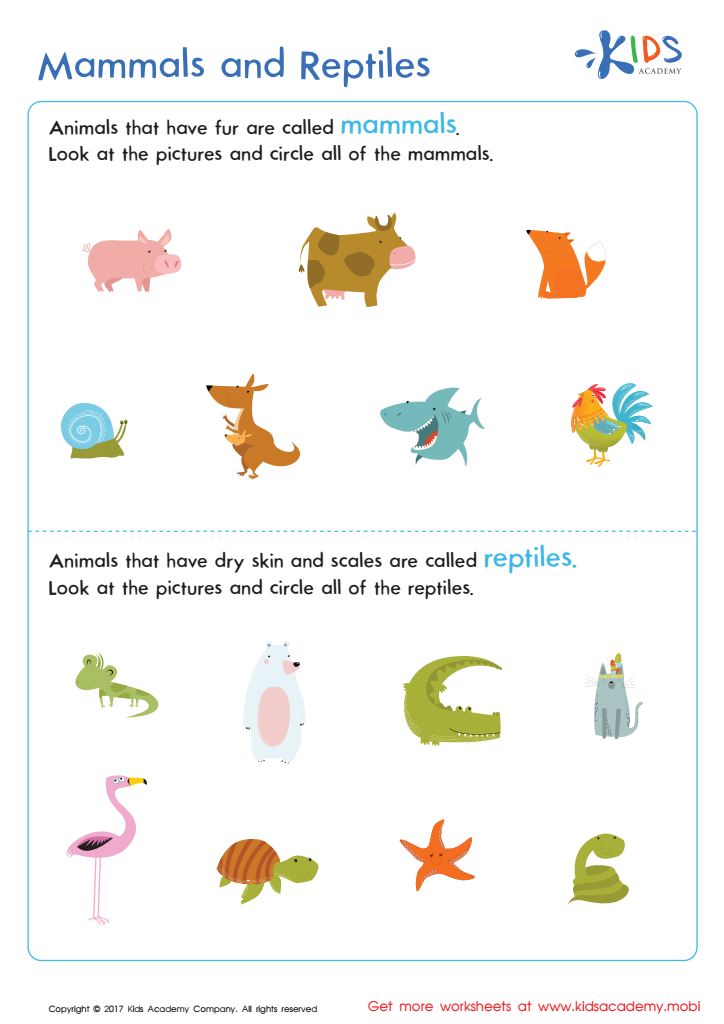

Mammals and Reptiles Worksheet
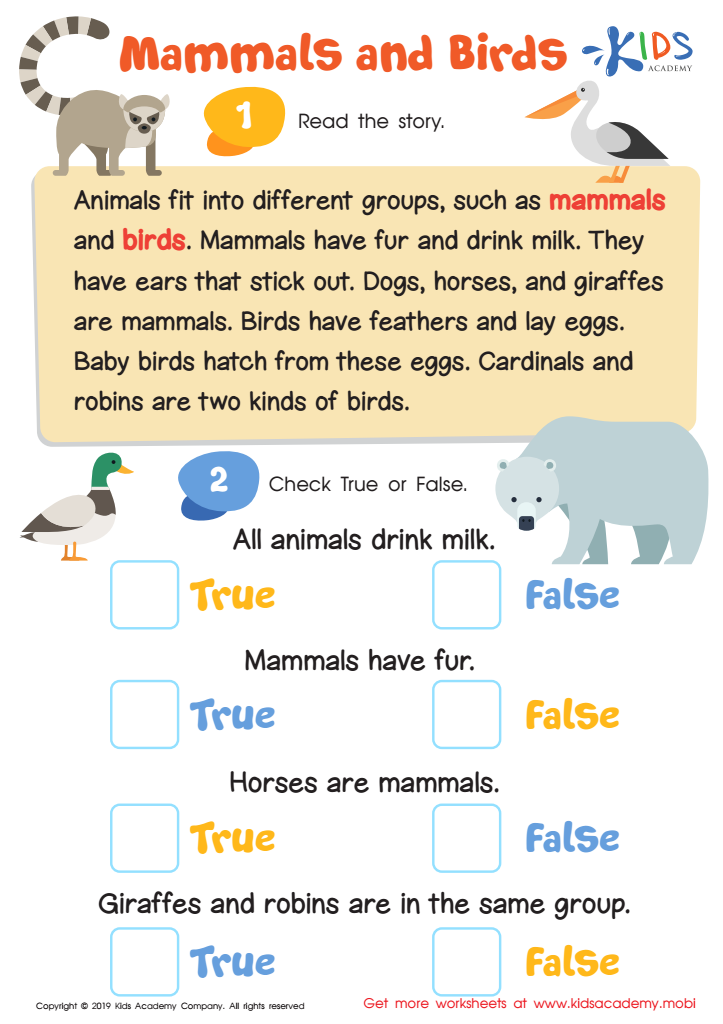

Mammals and Birds Worksheet
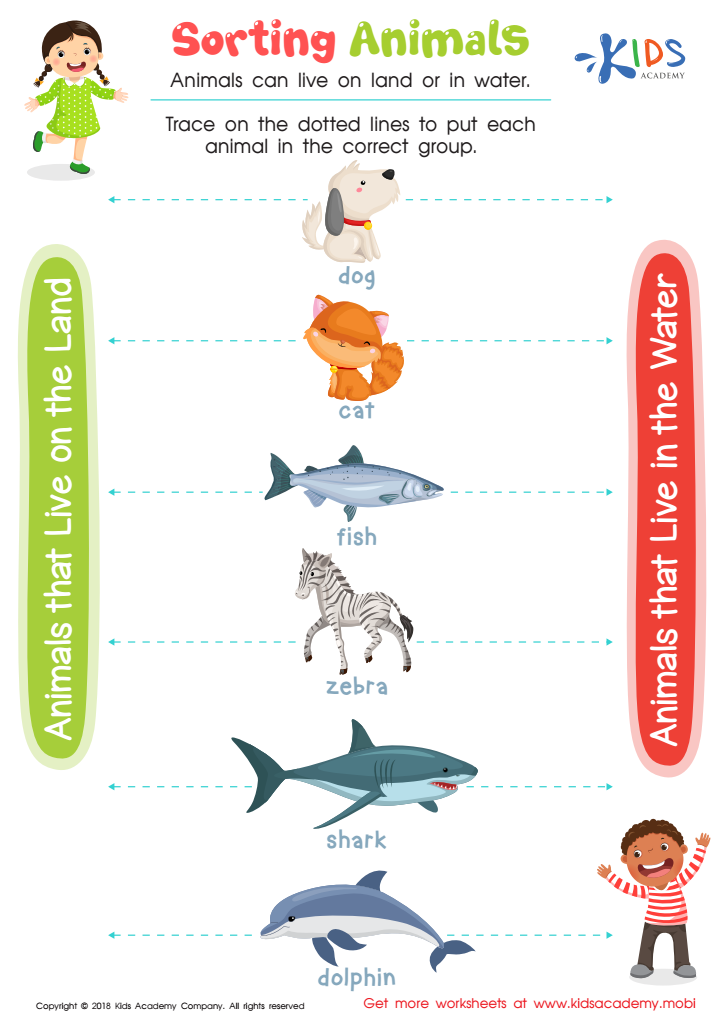

Sorting Animals Worksheet
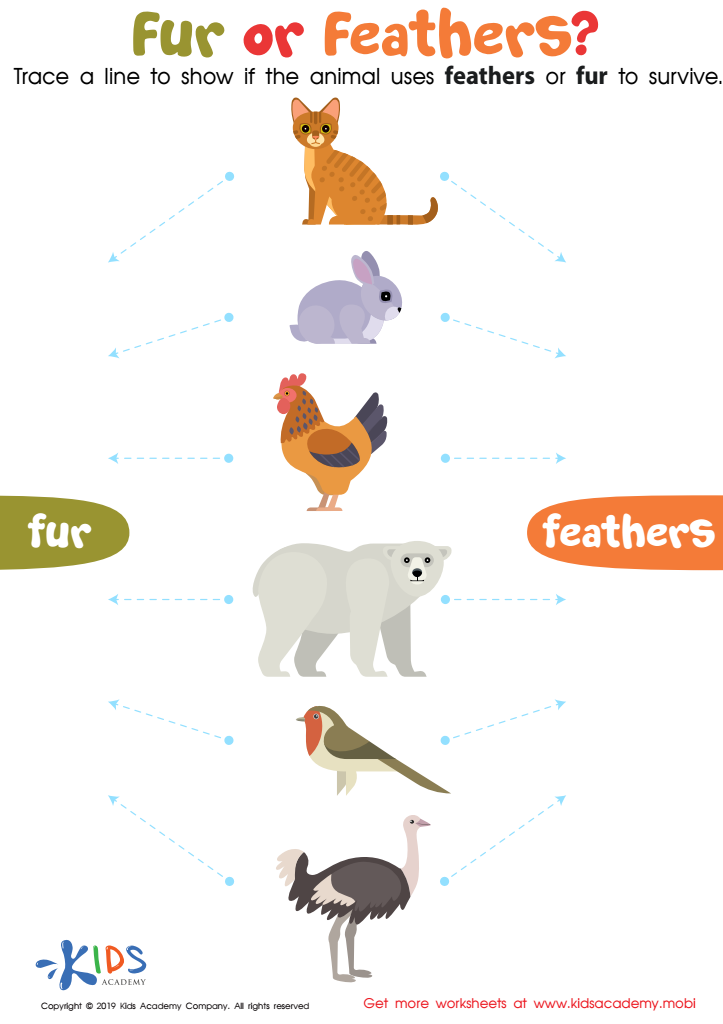

Fur or Feathers? Worksheet
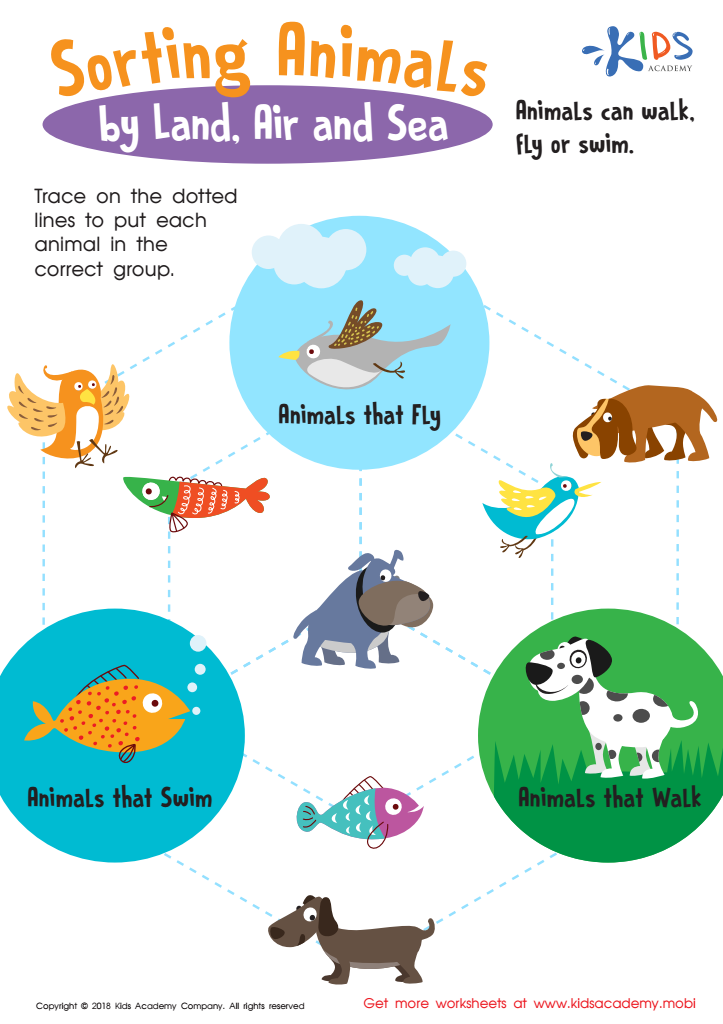

Sorting Animals by Land, Air and Sea Worksheet
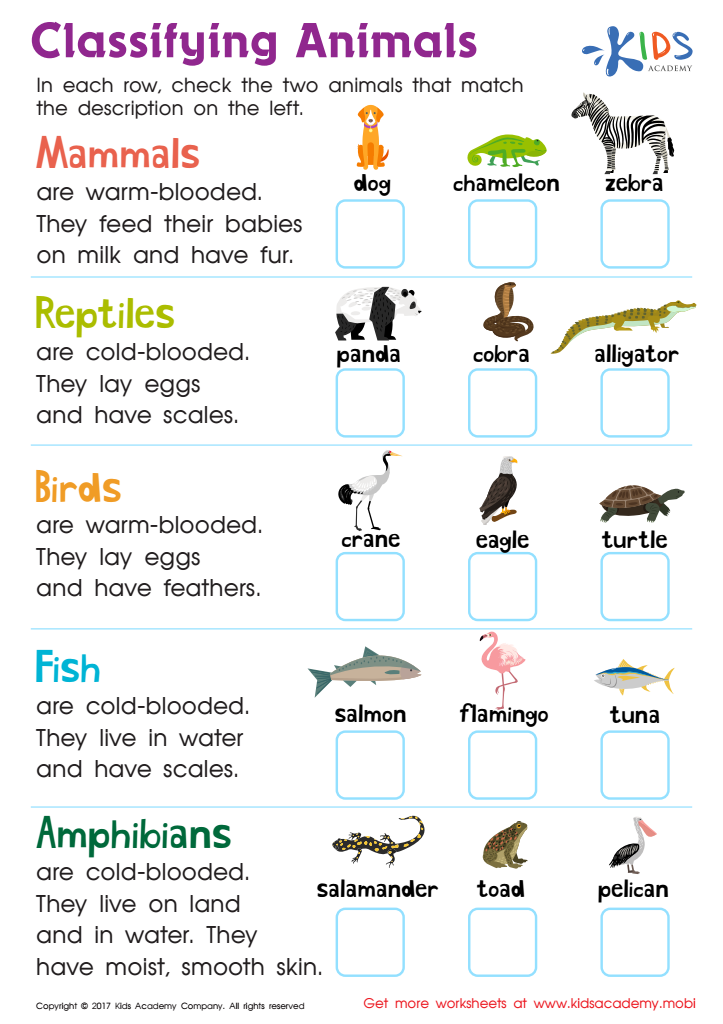

Classifying Animals Worksheet
Understanding animal classification is vital for children aged 6-8 as it lays the foundation for scientific thinking and curiosity about the natural world. When parents and teachers engage young learners in this topic, they not only enhance their knowledge of animals but also foster critical skills such as observation, comparison, and categorization. This foundational knowledge helps children learn how to identify different species based on shared characteristics, promoting deeper appreciation for biodiversity.
Moreover, discussions about animals and their classifications encourage empathy and respect for living beings, fostering a sense of responsibility toward the environment. Engaging children with normal plants and animals in their surroundings allows them to connect classroom learning with the real world, enhancing their observational skills and making science feel relevant.
Additionally, by exploring concepts like habitats, food chains, and ecosystems through this classification system, children learn about the interdependence of life, prompting environmental stewardship from a young age.
Finally, nurturing a passion for nature can inspire future scientists and conservationists, ultimately benefiting society. Thus, focusing on animal classification is not just an educational exercise; it's an investment in children's overall development, worldview, and responsibilities toward the planet.

 Assign to My Students
Assign to My Students















